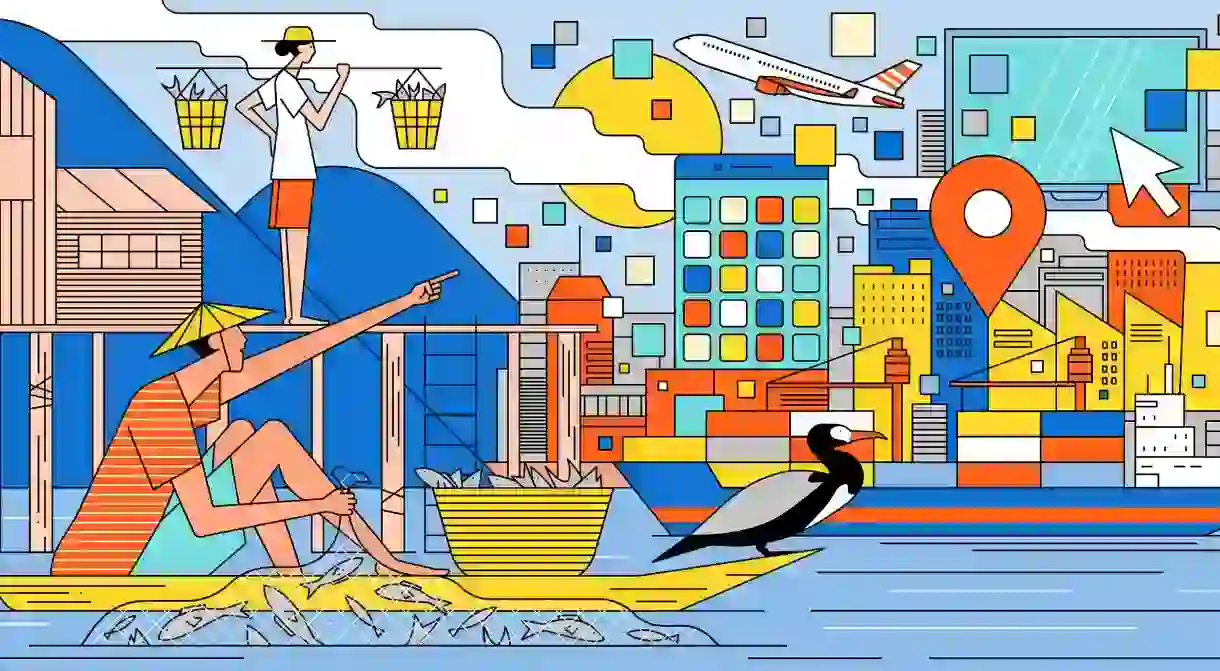How Copycat Culture Created China’s Silicon Valley

In just a few decades, Shenzhen has transformed from a rural fishing village into China’s leading tech hub and for some time, grew faster than any other city in the history of civilisation. This is the story of Shenzhen; where the mass production of knockoff goods led to creativity and innovation.
Located in southern China, right next door to Hong Kong, the city of Shenzhen may not be as famous as its neighbour – yet – but that could all be about to change.
Just 35 years ago, Shenzhen was a small fishing village of around 300,000 people. Like much of China, it was subject to prolonged eras of extreme poverty. But all this changed when in 1980 Deng Xiaoping, China’s leader at the time, declared Shenzhen the country’s first “special economic zone”.

This “special zone” would be China’s first test of capitalism; a decision that would ultimately transform Shenzhen into a megacity. The impact of this move was astounding. Between the years of 1980 and 2005, Shenzhen grew faster than any other city in the history of civilisation. Its population grew from 300,000 to over 12 million and the metropolitan area expanded from a mere 1.2 square miles to 780 square miles. But while these economic reforms contributed to the city’s transformation, there were cultural factors at play, too, namely shanzhai, or copycat culture.
The “Factory of the World”
The Cantonese term shanzhai (山寨) translates to “mountain fortress”, referring to a gang-controlled monopoly outside of government control. It’s usually used to describe the culture of creating knockoffs. But there’s more to shanzhai than mere imitation. In China, those who replicate products are not called “copycats”. It’s considered a skill to be able to create exact copies of original works and is part of the path towards mastering one’s craft.
By 1983, global demand for personal computers grew and tech companies began moving their manufacturing plants to Shenzhen where labour and cost of production were cheaper. Among them was the Taiwanese electronics company Foxconn, a factory in Shenzhen that manufactures Apple products. When workers started quitting their jobs, they would go on to create very similar counterfeit goods, or shanzhai products, and sell them at much lower prices.

Shenzhen’s former factory workers were often faster at creating and selling identical copies of big brand products. They would sometimes even add innovations to the original products. Not only was the city’s working-class contributing to the city’s technological development, but it was also competing with some of the biggest brands in tech.
Nowhere is shanzhai more evident than in Shenzhen’s famous Huaqiangbei shopping district. This one-kilometre stretch of technology and hardware stores is where the city’s buzzing culture of innovation is on full display. New products are created here every day; makers look at products currently on the market and find ways to improve them to create completely new pieces of technology.
This cycle of imitation and improvement is supported by Shenzhen’s maker movement ecosystem; intellectual property is publicly available for others to learn from and improve upon in a model known as “open source/open innovation”.
New shanzhai
Gradually, Shenzhen became known as “The Silicon Valley of Hardware”. Its rapid production and abundance of electronic parts provided the world with affordable tech goods. But China has recently decided to ditch the “Factory of the World” label. In the past five years, more than 17,000 manufacturers have closed down. Investments have moved away from traditional manufacturing and into research and development in the hopes that this will enable Shenzhen to become a global leader in tech innovation.
Central to the city’s transformation is the “open source/open innovation” model. It enables the sharing of ideas and information. Everyone has access to intellectual property and anyone can modify it. “New shanzhai”, as it’s often called, has helped to create an ecosystem for collaborative creativity and has been highlighted as the city’s competitive edge. In 2016, Shenzhen filed away more international patents than Britain and France.

By taking products and altering them to cater to local markets, shanzhai culture is proving that there’s more to it than just copying. A good example is local Shenzhen automobile company BYD, which stands for “Build Your Dreams”. They started with developing low-cost imitations of best-selling Toyotas and are now one of China’s most successful automotive manufacturers. Another example is Xiaomi, China’s largest mobile supplier. They offer high-tech and high-quality mobile phones that, on average, are 50% cheaper than most foreign brand phones.
Arguably, Shenzhen has transformed more radically than any other city on the planet in the past 40 years – from fishing village to major metropolis and now, China’s leading tech powerhouse. While plans to become the most important global centre for scientific and technological innovation might sound ambitious, at the rate Shenzhen has transformed, nothing seems beyond its rapid advances; the story of China’s most innovative city, it seems, has only just begun.













